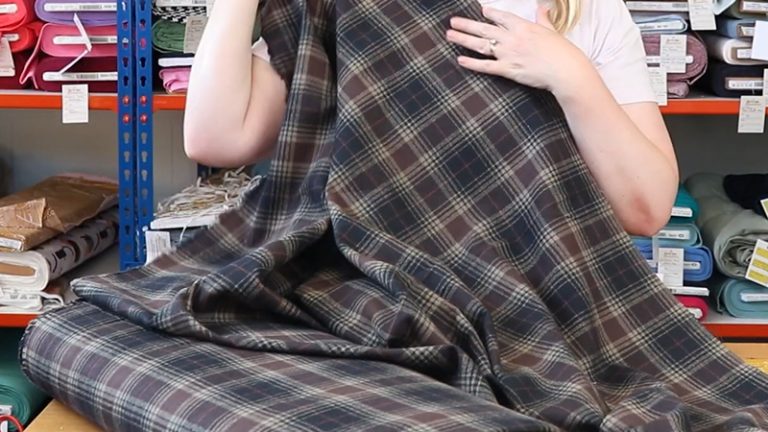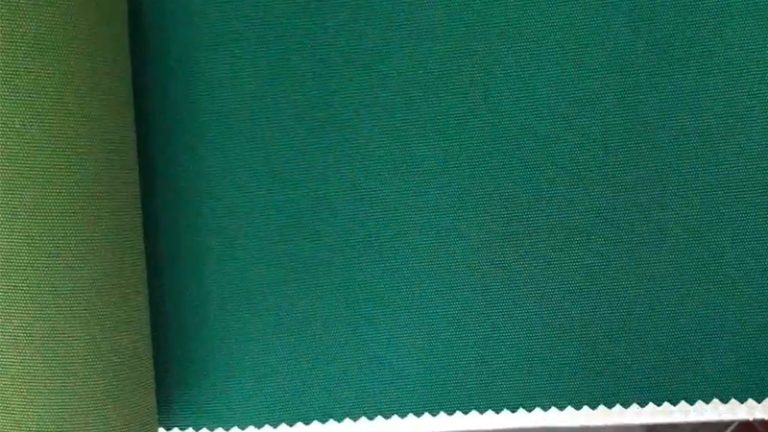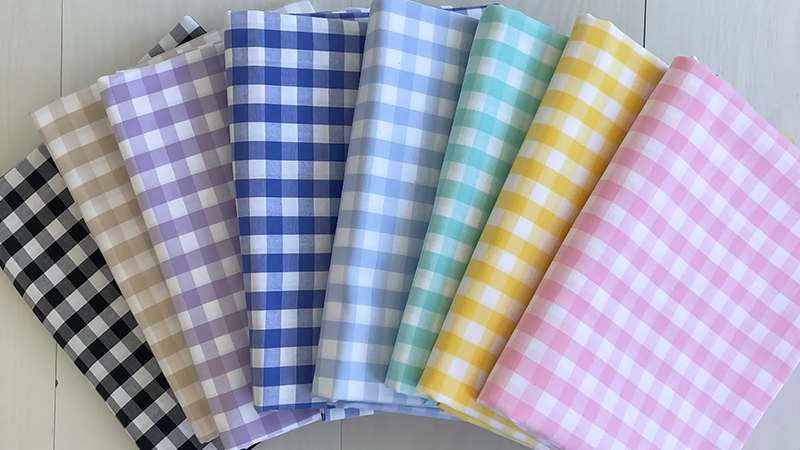
Gingham fabric is a timeless textile that has graced wardrobes and homes for centuries, instantly recognizable for its classic checkered pattern.
Traditionally made from cotton, gingham combines simplicity and versatility, making it suitable for fashion, home décor, and crafts.
Its distinctive design, featuring evenly spaced colored squares against a white background, has a universal appeal that transcends trends.
Lightweight, durable, and easy to maintain, gingham has maintained its popularity from rustic countryside settings to modern urban fashion.
Whether it’s a summer dress, a tablecloth, or a quilt, gingham fabric continues to offer charm, comfort, and style.
What is Gingham Fabric?
Gingham is a woven fabric distinguished by its simple checkered pattern. Typically, it features two colors, one being white, interlaced to form uniform squares.
Unlike prints, the pattern is woven directly into the fabric, giving it durability and texture. Originally made from cotton, modern variations may include blends with polyester or other fibers for added strength and wrinkle resistance.
The fabric is lightweight yet strong, making it ideal for various applications. Gingham’s timeless design and soft feel have made it a popular choice for both clothing and decorative items worldwide.
History and Origins of Gingham
Gingham fabric is more than just a classic checkered textile; its history tells a story of global trade, cultural exchange, and evolving fashion. Understanding its origins helps appreciate why gingham has remained popular for centuries.
Early Beginnings
The word “gingham” is believed to have originated from the Malay term “genggang,” meaning striped. European traders brought striped and checkered fabrics to Europe in the 17th century, and by the 18th century, gingham had established a foothold in England and France.
Popularity in the 19th and 20th Centuries
During the 19th century, gingham became associated with casual and practical wear, particularly in rural communities. Its affordability and durability made it popular among working-class populations.
By the 20th century, gingham transitioned from purely functional clothing to fashionable attire, worn in dresses, skirts, and blouses, while also becoming a staple in home décor like table linens and curtains.
Characteristics of Gingham Fabric
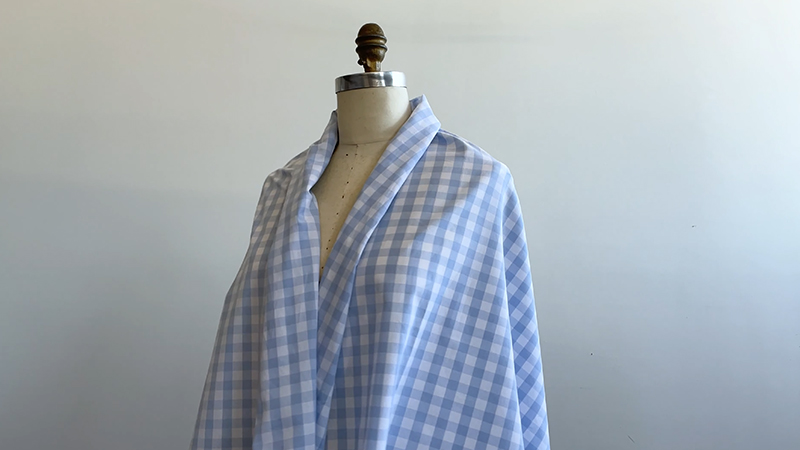
Here are the characteristics of Gingham fabric:
Weave and Texture
Gingham is woven using a balanced plain weave, where dyed threads in the warp and weft intersect to create a checkered pattern. This weaving method gives gingham its crisp texture while remaining soft enough for comfortable wear.
Pattern and Colors
The classic gingham pattern consists of small, evenly spaced squares, but the scale can vary from tiny checks to large, bold squares.
While traditional gingham features white paired with red, blue, or green, modern designs embrace a broader color palette.
Fabric Weight and Versatility
Lightweight yet sturdy, gingham is easy to handle and sew, making it suitable for clothing, accessories, and home décor. Its breathable nature makes it ideal for summer wear, while its structure allows for layering in cooler weather.
Types of Gingham Fabric
Here are the types of Gingham fabric:
Cotton Gingham
The most common and traditional form, cotton gingham, is soft, breathable, and perfect for summer clothing.
Polyester and Cotton Blends
Blending cotton with polyester increases durability and reduces shrinkage, making the fabric easier to care for without compromising comfort.
Lightweight vs. Heavyweight Gingham
Lightweight gingham is ideal for shirts, dresses, and children’s clothing, whereas heavyweight gingham is used for upholstery, curtains, and craft projects requiring more structure.
Uses of Gingham Fabric
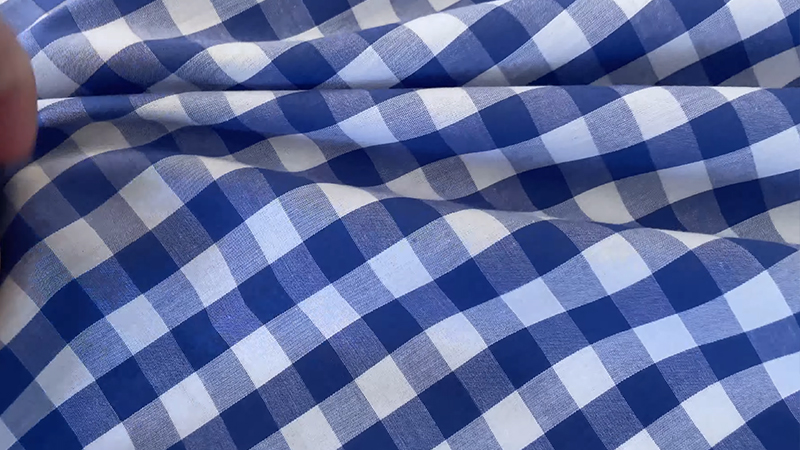
The uses of Gingham Fabric are as follows:
Fashion and Apparel
- Shirts and Blouses: Perfect for casual and semi-formal wear.
- Dresses and Skirts: Gingham dresses, often with fitted waists or A-line cuts, offer timeless summer style.
- Accessories: Scarves, headbands, and bags feature gingham for a playful, patterned touch.
Home Décor
- Tablecloths and Napkins: Adds a rustic charm to kitchens and dining spaces.
- Curtains and Cushions: Lightweight yet durable, gingham enhances casual interiors with a classic appeal.
- Bedding and Quilts: Its checkered pattern is ideal for cozy and visually appealing quilts.
Crafts and DIY Projects
Due to its easy-to-handle texture, gingham is favored in quilting, sewing, and other craft projects. Its vibrant patterns make it ideal for handmade accessories and decorative items.
Caring for Gingham Fabric
Here are the ways to care for Gingham fabric:
Washing
Gingham should be machine-washed in cold water to prevent fading and shrinking. Using a mild detergent helps preserve colors.
Drying
Air drying is recommended, but tumble drying on a low setting is acceptable. Avoid high heat to maintain the fabric’s shape.
Ironing
Iron on a medium setting while the fabric is slightly damp. This ensures smoothness without damaging the fibers.
Stain Removal
Prompt treatment of stains is essential. Gingham handles gentle spot cleaning well, but harsh chemicals may damage colors and patterns.
Styling Tips with Gingham Fabric
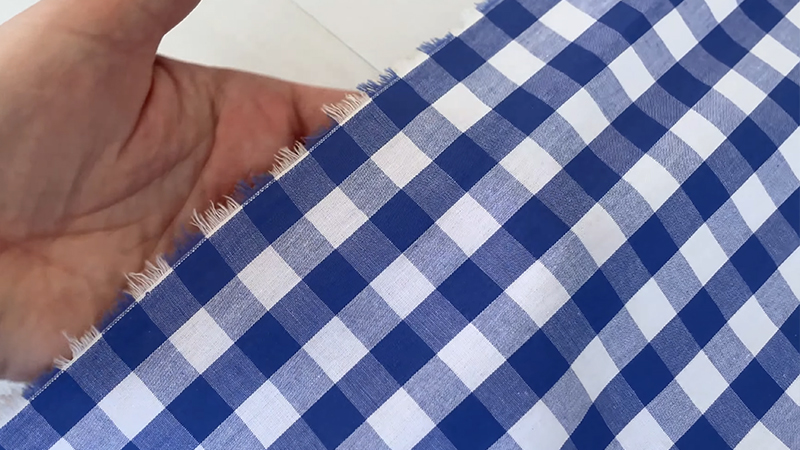
Fashion Pairing
Gingham pairs beautifully with solid colors to balance its bold checkered design. Neutral tones, denim, and subtle prints enhance the fabric’s charm.
Layering Ideas
Use gingham as a focal piece, like a shirt or skirt, and layer with jackets, cardigans, or scarves. Accessories such as handbags or headbands add subtle patterns without overwhelming the outfit.
Occasions and Seasons
Gingham is versatile across seasons. Light cotton versions are ideal for summer picnics and casual outings, while heavier blends can be used in spring or fall. Its timeless style makes it suitable for everyday wear and special events alike.
Why Gingham Fabric Remains Popular
Timeless Appeal
Its simple yet iconic pattern ensures gingham never goes out of style.
Versatility
Gingham works for clothing, accessories, and home décor, proving its adaptability.
Comfort and Ease of Use
Soft, breathable, and lightweight, gingham is easy to sew, wear, and maintain, making it a practical choice for designers and consumers alike.
Eco-Friendly Potential
Cotton gingham is biodegradable, and many manufacturers now offer organic options, appealing to environmentally conscious consumers.
Modern Trends in Gingham
- Bold Checks: Larger, statement-making squares are trending in contemporary fashion.
- Color Variations: Designers experiment with unconventional color pairings, including pastels and monochromes.
- Sustainable Gingham: Eco-friendly production methods and organic cotton options are increasingly popular.
Conclusion
Gingham fabric is more than just a textile; it’s a symbol of timeless style and practicality. Its balanced weave, checkered pattern, and lightweight nature make it suitable for fashion, home décor, and crafts.
From its origins in 17th-century Europe to its place in modern wardrobes and interiors, gingham continues to charm designers and consumers alike.
Its durability, versatility, and aesthetic appeal ensure that gingham will remain a beloved fabric for generations. Whether used for a casual summer dress, a cozy quilt, or a rustic table setting, gingham fabric embodies comfort, style, and enduring charm.

